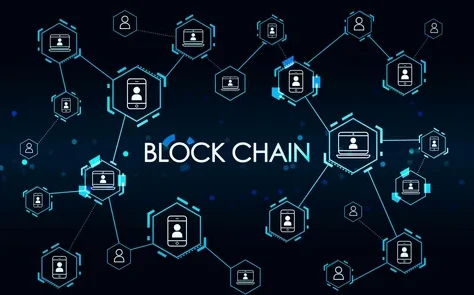The financial technology landscape is experiencing a revolutionary transformation, with blockchain investment platform development emerging as the cornerstone of modern digital finance. As traditional investment methods evolve, businesses worldwide are recognizing the immense potential of blockchain-based investment platforms to deliver unprecedented security, transparency, and accessibility. This comprehensive guide explores everything you need to know about blockchain investment platform development, from fundamental concepts to advanced implementation strategies.
Blockchain investment platform development represents more than just technological innovation—it’s reshaping how individuals and institutions approach investment management, asset trading, and portfolio diversification. Whether you’re an entrepreneur seeking to launch the next breakthrough investment platform or an established financial institution looking to modernize your services, understanding the intricacies of blockchain investment platform development is crucial for success in today’s competitive market.
Blockchain Investment Platform Development
Blockchain investment platform development refers to the comprehensive process of creating digital investment solutions built on distributed ledger technology. These platforms leverage blockchain’s inherent characteristics—decentralization, immutability, and transparency—to facilitate secure investment transactions, asset management, and trading activities.
Modern blockchain investment platforms integrate multiple cutting-edge technologies, including smart contracts, decentralized finance (DeFi) protocols, and artificial intelligence, to deliver sophisticated investment experiences. Unlike traditional investment platforms that rely on centralized authorities, blockchain-based solutions operate through consensus mechanisms, ensuring greater security and reducing single points of failure.
The development process encompasses various technical components, from designing user-friendly interfaces to implementing robust security protocols. Developers must consider scalability requirements, regulatory compliance, and integration capabilities with existing financial systems. This multifaceted approach ensures that the resulting platform meets both current market demands and future growth expectations.
Core Features of Modern Blockchain Investment Platforms

Multi-Asset Support and Portfolio Management
Contemporary blockchain investment platforms support diverse asset classes, including cryptocurrencies, tokenized securities, real estate tokens, and commodity-backed digital assets. Advanced portfolio management tools enable users to track performance metrics, analyze market trends, and implement automated rebalancing strategies.
These platforms incorporate sophisticated analytics engines that provide real-time insights into market movements, helping investors make informed decisions. Integration with external data feeds ensures users have access to comprehensive market information, while customizable dashboard features allow personalized investment experiences.
Smart Contract Integration and Automation
Smart contracts form the backbone of modern blockchain investment platforms, automating complex financial operations without human intervention. These self-executing contracts handle everything from trade settlements to dividend distributions, significantly reducing operational costs and processing times.
Advanced smart contract implementations include programmable investment strategies, automated compliance checks, and dynamic fee structures. This automation not only enhances efficiency but also minimizes human error, ensuring consistent execution of investment policies and risk management protocols.
Advanced Security and Compliance Features
Security remains paramount in blockchain investment platform development, with multi-layered protection mechanisms safeguarding user assets and personal information. Modern platforms implement advanced encryption protocols, multi-signature wallets, and biometric authentication systems to prevent unauthorized access.
Compliance features include automated Know Your Customer (KYC) verification, Anti-Money Laundering (AML) monitoring, and regulatory reporting capabilities. These built-in compliance tools help platforms maintain adherence to evolving financial regulations while providing seamless user experiences.
Blockchain Investment Platform Development Process and Methodology
The blockchain investment platform development process follows a systematic approach that ensures robust, scalable, and user-centric solutions. This methodology begins with comprehensive market research and requirements analysis, followed by architecture design and technical implementation.
Discovery and Planning Phase
The initial phase involves thorough market analysis, competitor research, and stakeholder requirement gathering. Development teams conduct detailed feasibility studies to identify optimal blockchain networks, consensus mechanisms, and integration possibilities. This phase also includes regulatory assessment to ensure compliance with applicable financial regulations.
Risk assessment and mitigation strategies are developed during this stage, addressing potential security vulnerabilities, scalability challenges, and market volatility factors. Project timelines, resource allocation, and budget considerations are finalized to establish clear development milestones.
Architecture Design and Technical Specifications
System architecture design focuses on creating scalable, secure, and maintainable platform structures. This includes selecting appropriate blockchain networks, designing database schemas, and planning API integrations with external services. Microservices architecture is often employed to ensure modularity and ease of maintenance.
Technical specifications cover smart contract design, user interface mockups, and backend system requirements. Security protocols, data encryption standards, and backup procedures are defined during this phase to establish comprehensive protection frameworks.
Development and Implementation
The development phase involves coding smart contracts, building user interfaces, and implementing backend systems. Agile development methodologies ensure iterative progress with regular stakeholder feedback and continuous improvement opportunities. Quality assurance procedures are integrated throughout the development cycle to identify and resolve issues promptly.
Testing protocols include unit testing, integration testing, and comprehensive security audits. Performance optimization techniques are applied to ensure platform responsiveness under varying load conditions, while user acceptance testing validates functionality from end-user perspectives.
Essential Technologies and Frameworks
Blockchain Networks and Protocols
Selecting the appropriate blockchain network is crucial for platform success. Ethereum remains popular for its robust smart contract capabilities and extensive developer ecosystem, while newer networks like Binance Smart Chain and Polygon offer improved scalability and lower transaction costs.
Layer 2 solutions, including Lightning Network and Optimistic Rollups, provide enhanced transaction throughput and reduced fees. Cross-chain compatibility features enable platforms to support multiple blockchain networks, expanding asset diversity and user accessibility.
Development Frameworks and Tools
Popular development frameworks include Truffle, Hardhat, and Remix for smart contract development and testing. Frontend frameworks like React.js and Vue.js provide responsive user interfaces, while backend technologies such as Node.js and Python handle server-side operations.
Database management systems, including MongoDB and PostgreSQL, store user data and transaction histories. API development tools facilitate integration with external services, payment processors, and regulatory compliance systems.
Security and Auditing Tools
Comprehensive security toolsets include static analysis tools like MythX and Slither for smart contract vulnerability detection. Penetration testing frameworks help identify potential attack vectors, while formal verification tools ensure mathematical correctness of critical contract functions.
Regular security audits by reputable third-party firms provide additional validation and build user trust. Continuous monitoring systems detect unusual activities and potential security threats in real-time.
Regulatory Compliance and Legal Considerations
Global Regulatory Landscape
The regulatory environment for blockchain investment platforms varies significantly across jurisdictions, requiring careful navigation to ensure compliance. Major financial centers like the United States, European Union, and Singapore have established comprehensive frameworks governing digital asset investment platforms.
Understanding these regulatory requirements is essential for successful platform deployment and operation. Compliance considerations include licensing requirements, investor protection measures, and reporting obligations to relevant authorities.
KYC/AML Implementation
Robust Know Your Customer and Anti-Money Laundering procedures are mandatory for legitimate investment platforms. These systems verify user identities, assess risk profiles, and monitor transactions for suspicious activities. Advanced implementations use artificial intelligence and machine learning to enhance detection capabilities while minimizing false positives.
Automated compliance monitoring systems continuously assess platform activities against regulatory standards, generating reports for regulatory submissions and internal audits. These systems help maintain compliance while reducing operational overhead.
Data Protection and Privacy
Data protection regulations, including GDPR and CCPA, impose strict requirements on how platforms collect, store, and process user information. Privacy-by-design principles ensure that data protection considerations are integrated throughout the development process.
Encryption protocols protect sensitive user data both in transit and at rest, while access controls limit data exposure to authorized personnel only. Regular privacy impact assessments ensure ongoing compliance with evolving data protection standards.
Advanced Features and Innovations
Artificial Intelligence Integration
Modern blockchain investment platforms leverage artificial intelligence to enhance user experiences and investment outcomes. Machine learning algorithms analyze market patterns, predict price movements, and suggest optimal investment strategies based on individual risk profiles and market conditions.
AI-powered chatbots provide 24/7 customer support, while natural language processing capabilities enable voice-activated trading and portfolio management. These intelligent features differentiate platforms in competitive markets while improving user engagement and satisfaction.
Decentralized Finance (DeFi) Integration
DeFi protocol integration expands platform capabilities by enabling yield farming, liquidity mining, and automated market making. These features provide users with additional income-generating opportunities while contributing to overall platform liquidity.
Decentralized exchange (DEX) integration allows users to trade assets directly from their wallets without transferring funds to centralized exchanges. This approach enhances security while providing access to broader market liquidity pools.
Cross-Chain Interoperability
Cross-chain compatibility enables platforms to support assets from multiple blockchain networks, significantly expanding investment opportunities. Bridge protocols facilitate seamless asset transfers between different networks, while unified interfaces provide consistent user experiences across various blockchain ecosystems.
Interoperability solutions reduce fragmentation and increase market accessibility, allowing users to diversify portfolios across multiple blockchain networks without managing separate wallets or interfaces.
Cost Factors and Development Timeline
Development Cost Breakdown
Blockchain investment platform development costs vary significantly based on feature complexity, security requirements, and regulatory compliance needs. Basic platforms may cost between $150,000 to $300,000, while enterprise-grade solutions with advanced features can exceed $1,000,000.
Key cost factors include smart contract development, security audits, regulatory compliance implementation, and ongoing maintenance requirements. Third-party integrations, custom features, and scalability enhancements contribute additional costs to the overall development budget.
Timeline Considerations
Typical development timelines range from 8 to 18 months, depending on project complexity and team size. The discovery and planning phase typically requires 4-6 weeks, followed by 12-16 weeks for architecture design and development. Testing, auditing, and deployment phases add an additional 8-12 weeks to the overall timeline.
Regulatory approval processes may extend timelines significantly, particularly in jurisdictions with strict financial regulations. Early engagement with regulatory authorities can help identify requirements and streamline approval processes.
Ongoing Maintenance and Updates
Post-launch maintenance includes security updates, feature enhancements, and regulatory compliance updates. Annual maintenance costs typically range from 15-25% of initial development costs, depending on platform complexity and market evolution.
Continuous monitoring systems, customer support infrastructure, and regular security audits contribute to ongoing operational expenses. Scalability improvements and new feature development require additional investment as platforms grow and evolve.
Security Best Practices and Risk Management

Multi-Layered Security Architecture
Comprehensive security frameworks implement multiple protection layers, including network security, application security, and data protection measures. Intrusion detection systems monitor platform activities for suspicious behaviors, while automated response mechanisms mitigate potential threats.
Cold storage solutions protect the majority of platform assets from online threats, while hot wallets maintain sufficient liquidity for daily operations. Multi-signature schemes require multiple approvals for significant transactions, reducing the risk of unauthorized asset transfers.
Smart Contract Security
Smart contract security requires rigorous testing and formal verification to prevent vulnerabilities that could lead to significant financial losses. Common vulnerabilities include reentrancy attacks, integer overflows, and access control issues.
Professional security audits by reputable firms provide independent validation of smart contract security. Continuous monitoring systems detect unusual contract behaviors and potential exploitation attempts in real-time.
Business Continuity Planning
Disaster recovery plans ensure platform availability during system failures or security incidents. Backup systems, redundant infrastructure, and emergency response procedures maintain service continuity while protecting user assets and data.
Regular testing of business continuity procedures validates effectiveness and identifies areas for improvement. Documentation and staff training ensure consistent implementation of emergency response protocols.
Future Trends and Market Opportunities
Emerging Technologies
Quantum computing advancements may require updates to encryption protocols and security measures in the future. Platforms must prepare for quantum-resistant cryptography to maintain long-term security effectiveness.
Internet of Things (IoT) integration opens opportunities for automated investment strategies based on real-world data inputs. Smart city initiatives and industrial IoT deployments provide new data sources for investment decision-making algorithms.
Market Evolution
Institutional adoption of blockchain investment platforms continues accelerating, driven by regulatory clarity and technological maturity. Traditional financial institutions increasingly offer blockchain-based investment products to meet growing demand from institutional and retail investors.
Central Bank Digital Currencies (CBDCs) development may create new integration opportunities and regulatory requirements for investment platforms. Early preparation for CBDC compatibility ensures platforms remain competitive as digital currencies gain adoption.
Regulatory Development
Regulatory frameworks continue evolving to provide clearer guidelines for blockchain investment platform operations. Sandbox programs in various jurisdictions allow platforms to test innovations while working with regulators to develop appropriate oversight mechanisms.
International regulatory cooperation efforts aim to create consistent standards across jurisdictions, reducing compliance complexity for global platform operators. These developments support market growth while maintaining investor protection standards.
Conclusion
The future of investment management lies in blockchain technology’s transformative power to deliver secure, transparent, and accessible financial solutions. As markets continue evolving and regulatory frameworks mature, blockchain investment platform development presents unprecedented opportunities for innovation and growth.
Success in this dynamic landscape requires expertise, strategic planning, and commitment to excellence in both technology implementation and regulatory compliance. From initial concept development to post-launch optimization, every aspect of the development process contributes to platform success and user satisfaction.
Ready to revolutionize your investment platform with cutting-edge blockchain technology? Partner with experienced blockchain investment platform development specialists who understand the complexities of modern financial technology and regulatory requirements. Contact us today to discuss your project requirements and discover how our comprehensive blockchain investment platform development services can transform your vision into a market-leading reality that exceeds user expectations and drives sustainable business growth.

















